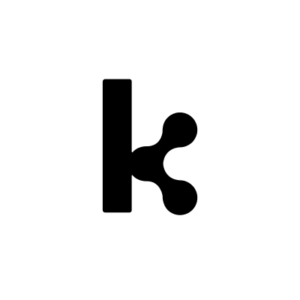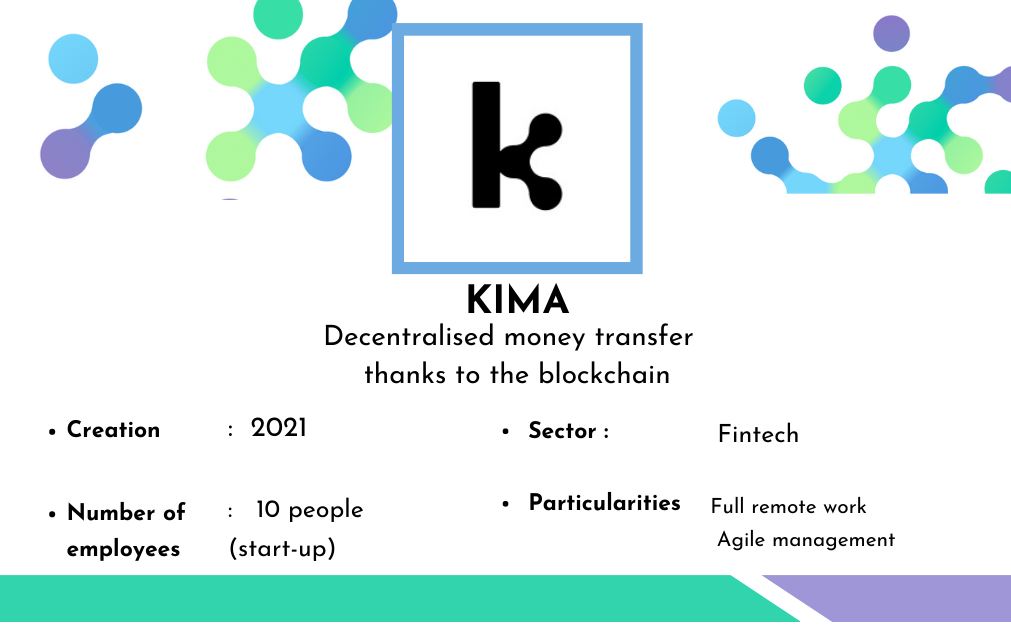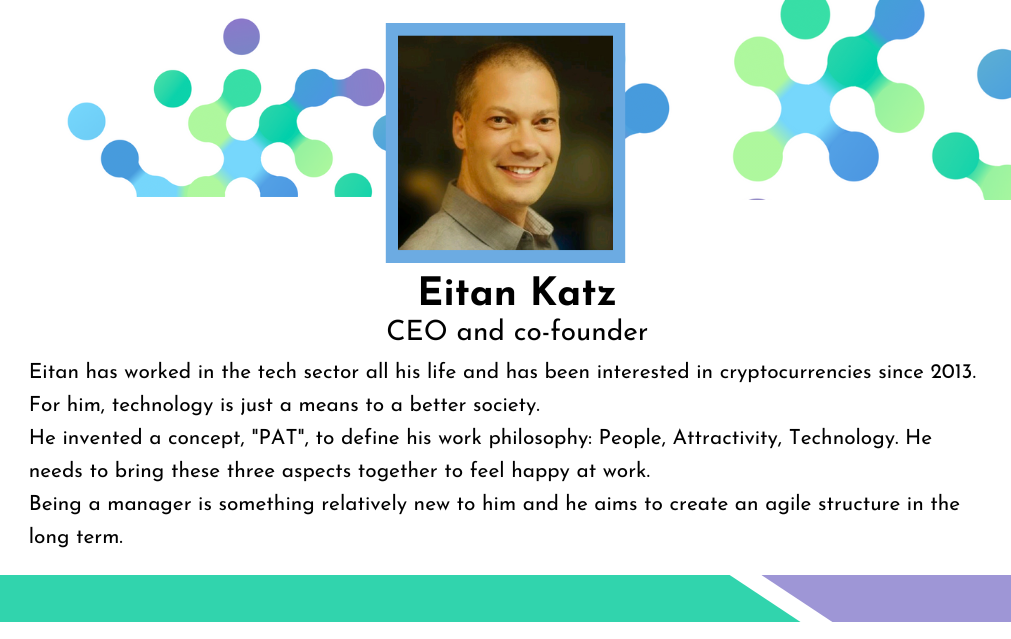
In this article, we will present Kima, a 100% remote start-up, which decided to implement an agile management method. Its CEO Eitan also shares his vision on crises…


The team:
When you imagine what a team looks like in an Israeli startup, you’re far off from imagining what Kima looks like. Of the 10 team members, half are highly specialized developers recruited from all over the world! (Japan, USA, Finland and Portugal).
Eitan, who kindly welcomed us, is the co-founder and CEO (Chief Executive Officer) of Kima. The other two co-founders are respectively COO (Chief Operating Officer) and CTO (Chief Technical Officer) of the company. The rest of the team is made up of technical developers specialized in blockchain, a person who deals with marketing, and two “business developers”. (In charge of the company’s global development strategy).
The company:
Kima is a company operating in the fintech sector (which combines technology and finance), a highly promising sector in Israel. In fact, there was $4.5 billion worth of fundraising through 2021 for fintech in Israel.
When you don’t have a foot in decentralized finance (= finance outside the traditional banking system), understanding in detail what Kima does is complicated. To put it simply, Kima creates a blockchain that facilitates financial transactions between different currencies, be it cryptocurrency or traditional currency.
Eitan tells us, that this is a revolution that would be comparable to the creation of VISA or MASTERCARD in traditional finance. Indeed, these players now allow us to pay anywhere in the world, regardless of the currency. They handle conversions for us, but they are limited to traditional currencies. KIMA’s goal is not to replace them, but to partner with them, in order to integrate crypto-currencies in exchanges.
Concrete examples of what Kima allows are given here, if you wish to better understand what it is they do: https://kima.finance/use-cases .
Kima is a small Israeli start-up with an international team that works remotely on a full-time basis.
The particularities of this start-up make its management a real challenge. We’ll explain it all a little further down…
Philosophy in the face of crises
When we talk to Eitan about crises, we find that the Covid crisis has had a strong impact on his thinking.
According to Eitan, the Covid crisis made us realize that established norms may not actually be established. It showed us that freedom of movement and resources are not in fact absolute. It has shown us that situations, which at first sight were impossible, could indeed occur: a ban on leaving one’s home, a ban on leaving one’s country…
In fact, what Eitan means is that abnormal situations can suddenly become normal in a crisis.
Eitan also drew a parallel with the energy crisis that society is experiencing today: it is possible that things that are at first commonplace, such as heating, can become real problems later on.
In short, he wants us to understand that it is in times of crisis that the unthinkable becomes thinkable. That the abnormal becomes normal. That situations that seemed natural to us are no longer so.
According to Eitan, these sudden changes linked to the sudden arrival of the COVID crisis, which in our societies have called into question various aspects of people’s mentality, including the working world.
In fact, today there is a global movement to question the established order. We are beginning to realize that it is possible to do things differently.
Moreover, the COVID crisis has also revealed to us the importance of time, which is finally “the only thing we have with certitude”, he confided.
These post-Covid changes in mentality are finally causing employees to reflect and rethink their priorities. This is why Eitan is trying to take into account the new wills demanded by society: the implementation of an agile management.
Before co-founding Kima, Eitan had always worked in offices, where communication and organization were quite natural and spontaneous according to him.
However, Kima is not a traditional organization and implementing agile management is a real challenge: communication is done remotely, time zones are different, and employees have rather solitary profiles. Moreover, one detail is important: the weekend is not the same time in Israel as in the rest of the world! So Eitan confides that it is not easy to be synchronized with the other employees. For example, when he starts his weekend on Thursday evening, it is still Thursday morning in the United States and there are still two days of work to do.
In this context, it is necessary to establish a method utilizing adapted tools in order to avoid chaos and thus coordinate the teams correctly.
In order to manage communication between everyone, Kima’s employees use relatively classic tools, but with clearly defined roles for everyone:
But in practice, how does Eitan implement agile management?
In his desire to implement an agile management style, Eitan wanted to get rid of any hierarchy. To do this, he decided to use the OKR method, which is an acronym for “Objectives and Key Results”, the aim of which is maximize the responsibility given to employees.
This management method was invented in 1983 by one of the founders of Intel, Andy Grove, and was popularized by Google. The principle is quite simple: define for a given period of time qualitative objectives to be achieved as well as key measurable results which are associated with each objective.
At Kima, management sets strategic objectives in order to “know where to go,” and then the teams define “how to get there” with sub-objectives. Eitan sets the strategic goals and then each employee is free to set his or her own goals, without needing Eitan’s approval. This makes all the difference, because very often OKRs are used as a control tool by superiors, who in fact set strict to-do lists for their employees. This is not the case at Kima.
In fact, OKRs are a way to replace the flow of information that naturally circulates in the company, and to organize it in a shared document. Everyone writes down their goals and the progress they’ve made. This allows one to know where the others are and to move forward together.
The method seems simple, but it is important to be vigilant and not to fall into the trap of an overly-controlling management style that is masked under the guise of OKRs.
Eitan warns about the other dangers and challenges that arise from the OKR method:
The OKR method as an answer to the crisis of work commitment
« Being involved in finding solutions is much more motivating than following orders that you don’t understand or don’t agree with.» – Titan Katz, CEO of Lima
The OKR method is an interesting management method because it responds to a crisis that society is currently experiencing: the crisis of purpose.
Today, more and more employees need to find a sense of meaning in their work. They need to feel involved in the decisions taken by the company and to be part of the execution of major missions. The OKR method allows these employees to be included in the same clearly defined and meaningful objective.
“Being involved in the search for solutions is much more motivating than following orders that you don’t understand or that you don’t agree with,” says Eitan.
We hope you enjoyed this article! Thanks and see you soon!
lodysseemanageriale
Élodie & Dimitri
| Cookie | Duration | Description |
|---|---|---|
| cookielawinfo-checkbox-analytics | 11 months | This cookie is set by GDPR Cookie Consent plugin. The cookie is used to store the user consent for the cookies in the category "Analytics". |
| cookielawinfo-checkbox-functional | 11 months | The cookie is set by GDPR cookie consent to record the user consent for the cookies in the category "Functional". |
| cookielawinfo-checkbox-necessary | 11 months | This cookie is set by GDPR Cookie Consent plugin. The cookies is used to store the user consent for the cookies in the category "Necessary". |
| cookielawinfo-checkbox-others | 11 months | This cookie is set by GDPR Cookie Consent plugin. The cookie is used to store the user consent for the cookies in the category "Other. |
| cookielawinfo-checkbox-performance | 11 months | This cookie is set by GDPR Cookie Consent plugin. The cookie is used to store the user consent for the cookies in the category "Performance". |
| viewed_cookie_policy | 11 months | The cookie is set by the GDPR Cookie Consent plugin and is used to store whether or not user has consented to the use of cookies. It does not store any personal data. |